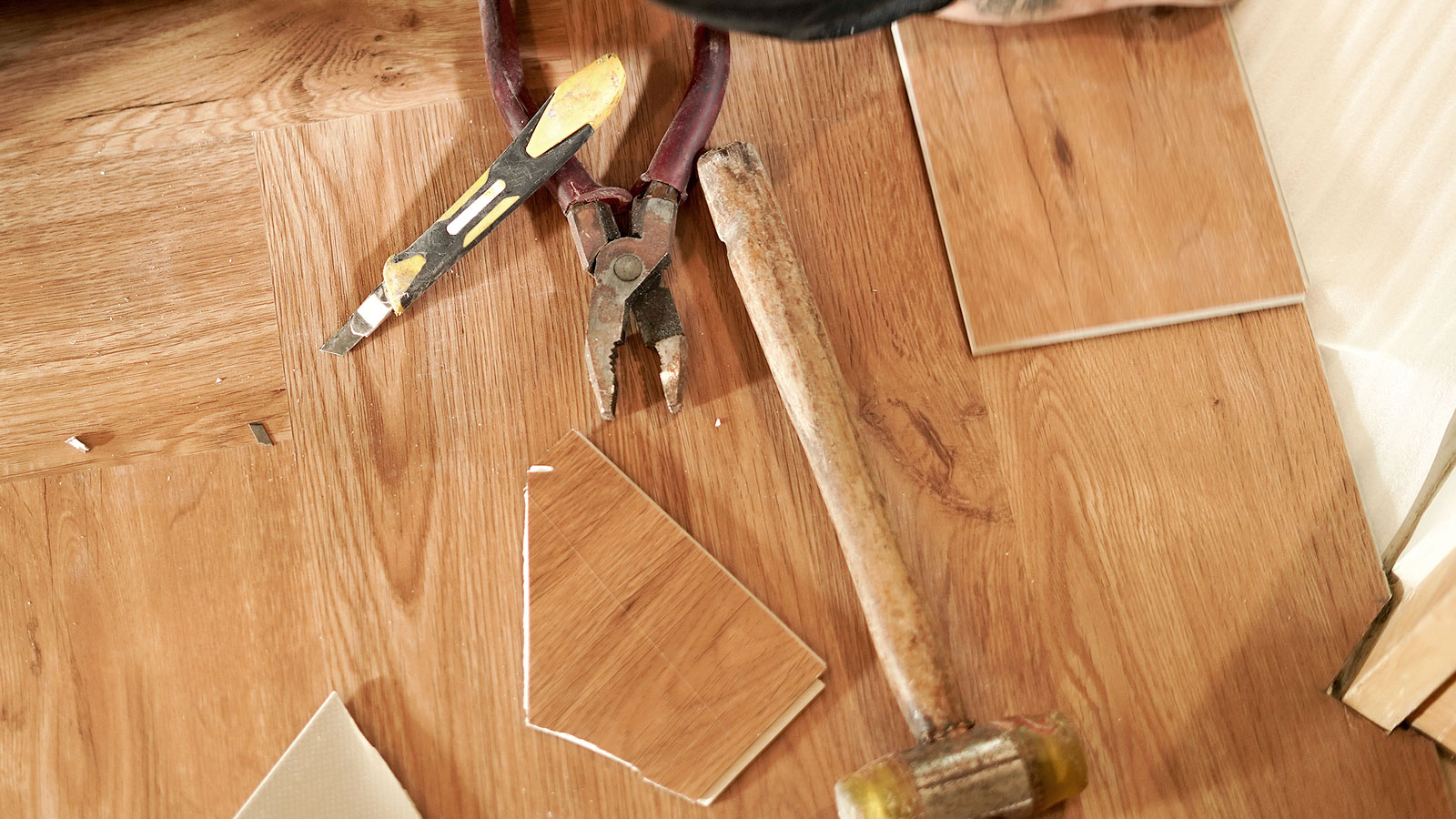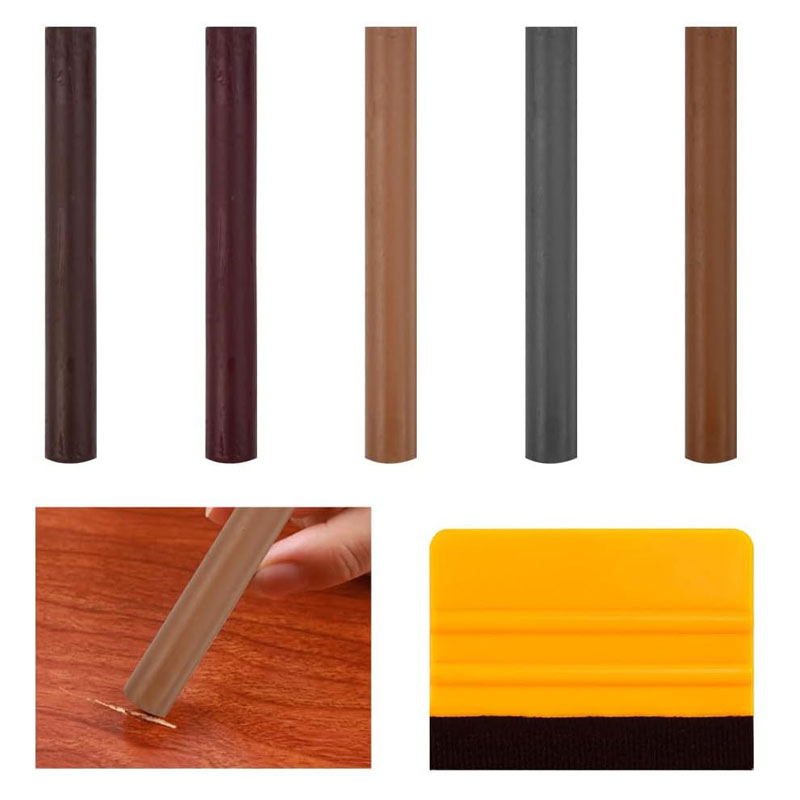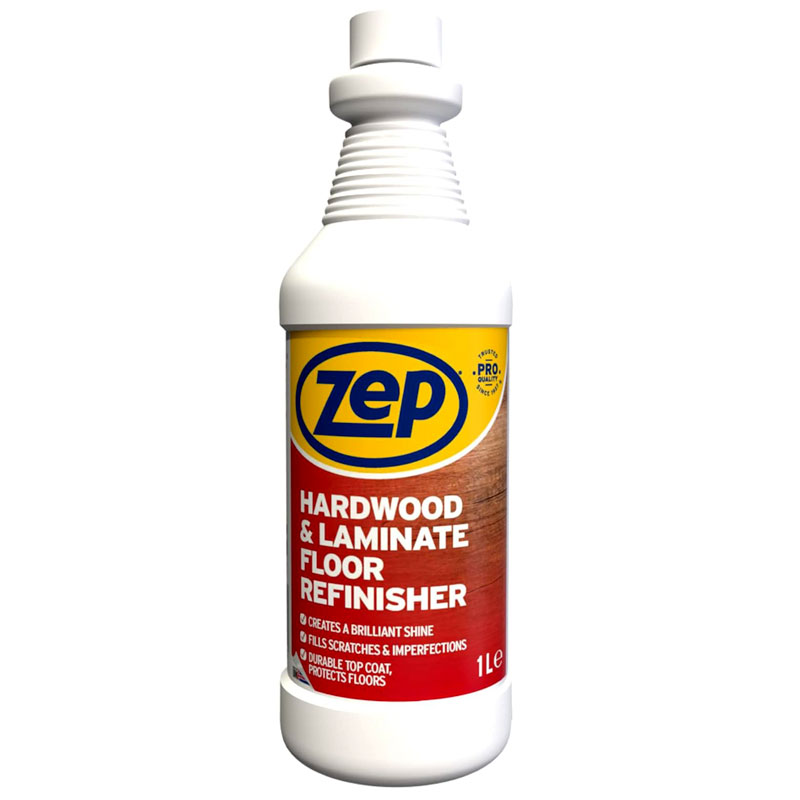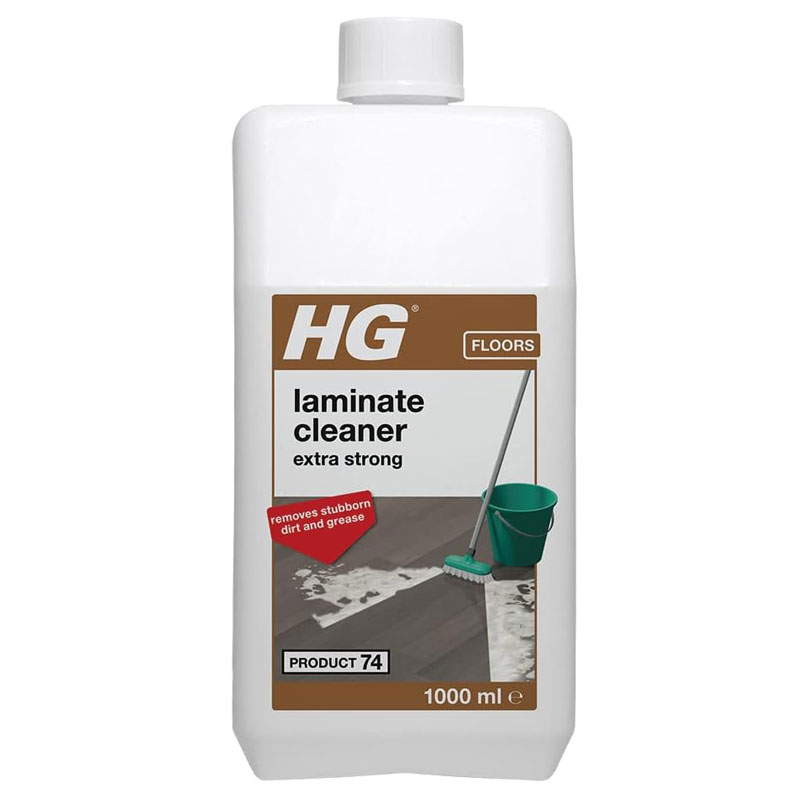Pro vinyl flooring repairs tips to restore your surfaces
Discover how to tackle vinyl flooring repairs from scratches to stains to replacement with our expert advice

Vinyl flooring repairs are an inevitable part of having vinyl flooring throughout your home. Alongside general wear and tear, accidents can leave gouges and stains and unwanted moisture issues can have an impact.
Whatever type of vinyl flooring you have installed, the same repair principles you’ll find in this article will work across all of them. Scratches are the most common problem, and typically the easiest to fix. But, here we also look at other repairs you might need to apply and reveal what you need and how to make it happen.

Christoph Wellekoetter is Head of Product Management at Parador, a global interiors brand that designs, develops and produces a range of flooring from engineered wood to laminate and vinyl.
Vinyl flooring repairs: How to fix scratches and stains
There are several methods for fixing scratches and stains, depending on what type of scratches or strain you are looking to repair or remove.
Superficial scratches
Light surface scratches are generally caused by general wear and tear such as footwear walking across the floor, furniture being moved and pet claws. These are typically the easiest to deal with and get rid of.
Christoph Wellekoetter, Head of Product Management at Parador suggests that, “For superficial scratches, using a varnish retouching pen is very effective”. You can buy these in sets in various colours to match your vinyl flooring. These are like wooden coloured permanent markers, which you simply draw onto a scratch.
An alternative is to use a vinyl floor polish to help hide scratches and imperfections. Use a kitchen scourer and all-purpose floor cleaner, to get rid of dirt, debris and smooth out any rough edges. Wash down and leave to dry naturally. Finally, apply a laminate floor polish to the surface to give it a shine.
Deeper scratches
If you have deeper marks in a vinyl floor that can’t be hidden with cleaning and polishing Wellekoetter recommends a, “Premium repair set for any serious damage to a floor's surface.” He adds, “ When applying the care product, always keep to the instructions on the packaging.”
Vinyl floor repair kits will include wood coloured wax sticks, which you need to match as close as possible as the colour of the vinyl floor. These can be rubbed on shallow scratches to fill the scratch. Then blended with a microfibre cloth.
For deeper scratches you need to melt the wax into the scratch or gouge, smooth out with a flat edge and leave to harden. Again you can use a cloth to help blend it when the wax cools down.
Stains and marks
Getting rid of stains is pretty straightforward on vinyl flooring as Wellekoetter shares, “To remove stains on vinyl flooring, we advise applying a PU cleaner with a cloth to the area being treated and rubbing it dry after a few minutes. If necessary, repeat this process. To finish, wipe the area with a damp cloth.”
Try these to help restore your vinyl floor

A set of wax filler sticks that comes in five basic colours to help you match a variety of wood tones and fill in scratches, holes and gouges
Why is my vinyl floor lifting and how do I fix it?
If you have a floating vinyl floor – one that is placed on top of a subfloor but not fixed down – this can lift due to expansion/contraction. This can happen due to temperature changes in a room. How do you deal with it? Make sure that your vinyl flooring has a 5-10mm gap at the edges against the wall.
If you have a fixed floor – one that is glued to a subfloor – the reason could be that moisture has got under the floor to affect the bond. Or, there’s a dip in the subfloor where the glue hasn’t bonded properly. If moisture is the issue you will need to sort the moisture issue and then lay the floor again.
When should I replace rather than repair vinyl flooring?
There will come a time when it makes more sense to replace than try to repair your vinyl floor as Wellekoetter explains, “Vinyl is extremely durable and has a long life cycle of at least 20 years and in many cases, vinyl can be repaired. However, if the decorative layer is damaged in many places or over an extensive area, it may make sense to replace the floor rather than repair it.”
But there may be a more pragmatic reason as Wellekoetter adds, “It makes sense to replace the floor if you simply no longer like the appearance and want to change the look and feel of a space.”
How do you replace vinyl flooring?
This will depend on the type of vinyl flooring i.e. fixed, floating, and where the repair needs to be made. If the floor that needs replacing is in a position i.e. edge of room, you can slide under a scraper like this Titan Tools Stainless Steel Scraper from Amazon, (make sure it's not wider than the plank) and lift the flooring. Clean the area and lay a new plank.
If you need to repair laminate flooring where you can't use a scraper, i.e. middle of floor, get a sharp utility knife and make two cuts around 10-15mm in from the long edge and slide under your scraper to pull it up. Then clean the area and replace the flooring.
How do you fix gaps in vinyl flooring?
“If you choose vinyl with a click connection, you won't have the problem of gaps in the joints, as the planks are pulled tightly together by the click connection,” explains Wellekoetter.
He adds, “With dry back (glued) joints, problems only occur if installation errors have been made or the wrong adhesive has been used. But if you do encounter any issues he suggests that, “When small gaps do occur, they can be filled with hard wax.”
How do you fix a bulge in vinyl flooring?
Bulges in vinyl flooring can be fixed with a few simple methods. One quick method that often works is to place a towel over the bulge and place a hot iron on top and wait until the bulge disappears. Then take off the iron and use a heavy weight to ensure the bulge doesn't reappear.
How to protect your vinyl floor from scratching
Scratches are typically caused by footfall and furniture being dragged across a floor. In areas where there is heavy footfall the introduction of some sort of floor protection is a good idea.
This could be door mats for doorway entrances, strategically placed rugs in a hallway, lounge, bedroom. Or, you could introduce a heavy duty plastic carpet protector like this Extra Large Vinyl Plastic Carpet Protector from Amazon under furniture.
To stop the legs of furniture scratching a vinyl floor surface make sure to add felt pads like these SOFTTOUCH Nail-on Heavy Duty Felt Pads from Amazon.
Maintaining and cleaning a vinyl floor will help make sure that it stays looking its best. But if you decide it’s time for something new check out our Wood flooring ideas and Beautiful stone flooring ideas guides to help you make a choice.
Get the Homebuilding & Renovating Newsletter
Bring your dream home to life with expert advice, how to guides and design inspiration. Sign up for our newsletter and get two free tickets to a Homebuilding & Renovating Show near you.
Steve Jenkins is a freelance content creator with over two decades of experience working in digital and print and was previously the DIY content editor for Homebuilding & Renovating.
He is a keen DIYer with over 20 years of experience in transforming and renovating the many homes he has lived in. He specialises in painting and decorating, but has a wide range of skills gleaned from working in the building trade for around 10 years and spending time at night school learning how to plaster and plumb.
He has fitted kitchens, tiled bathrooms and kitchens, laid many floors, built partition walls, plastered walls, plumbed in bathrooms, worked on loft conversions and much more. And when he's not sure how to tackle a DIY project he has a wide network of friends – including plumbers, gas engineers, tilers, carpenters, painters and decorators, electricians and builders – in the trade to call upon.



